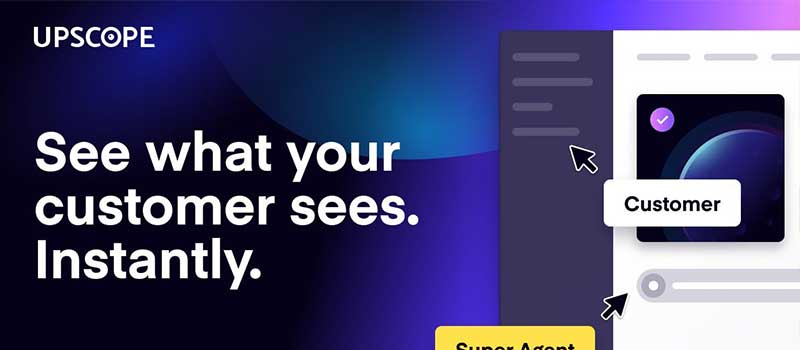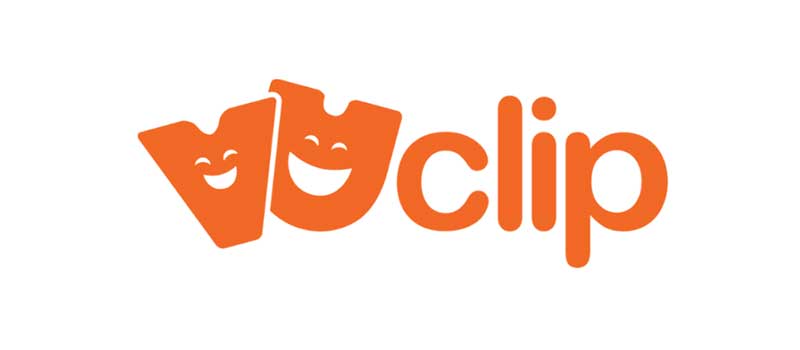So you’ve got a product or service that meets a want or need right?
That’s great. It’s the makings of a successful business and brand.
But having a great solution is only one-half of the pie.
Finding a way to craft a message to influence the people who need what you have and then mobilizing that message, is the more challenging task.
Stemming from a clearly defined brand strategy, an effective go-to-market strategy zeroes in on who you’re targeting, where they are, and exactly how you’ll engage.
In this article, you’ll discover a step-by-step guide to help you understand the components of a successful go-to-market strategy and a follow-through template to guide you in creating one for your next product launch.
First, we’ll start with the basics!
What Is A Go-to-Market Strategy?

A go-to-market strategy (GTM strategy) is a detailed action plan that is created to position your product for market launch. It involves clearly defining your target (ideal) customers, creating a marketing plan and messaging, and outlining your sales strategy.
Your GTM strategy is the roadmap that details how you want to reach your target market with your new product and achieve a competitive advantage.
It involves positioning your product as a solution to an identified market problem.
When to Create a GTM Strategy

Whether you are targeting individuals or operating a B2B business model, you can create a GTM strategy when you are:
Launching a new product or service in an existing market
Introducing a product or service in a new market
Relaunching your company or brand
Testing a new product’s market for growth
The reason companies create GTM strategies is that it gives them the opportunity to clarify the purpose of their product, the problem it’s meant to solve, and the people that would benefit from it.
This helps the company to leverage appropriate tactics by adopting scalable marketing models that will help them achieve meaningful engagement with customers and close sales.
PRO Brand Strategy BluePrint
Build Brands Like A Pro Brand Strategist

Benefits of a GTM Strategy

Markets don’t respect guesswork, your product launch will remain an experiment if you don’t go about it with an informed strategy. Some companies rush to the market based on a “perceived need” that is not subject to validation.
However, the information you gather with your GTM strategy will help prevent the mistakes and oversights that are often common to new product launches, thereby limiting the chances of failure considerably.
An effective GTM strategy will:
Increase the chances for the success of your product launch
Clearly set a direction for all stakeholders and create an established path for market success and growth
Optimize the time required to market your product or service
Improve your ability to manage the challenges that often come up during product launches
Increase your ability to react positively to market changes
Beyond using GTM strategy to accomplish successful product launches, companies can also leverage the strategy to outline steps towards improving the customer experience for products that are already established in the market.
Explore Brand Strategy
Programs & Tools
Types of GTM Strategy

A GTM strategy can be product-led or sales-led, however, you can also direct your strategy towards any of the models outlined below:
#1. Inbound

Create brand awareness and attract prospects organically at every stage of the buyer’s journey using methods like content marketing, blogs, search engine optimization (SEO), social media, as well as paid strategies such as search engine marketing (SEM).
Inbound helps to attract the people who are already looking for your solutions with the right content and at the right time.
#2. Outbound

Although inbound marketing is a very effective long-term strategy, quite often, a go-to-market strategy aims to achieve short-term goals.
Paid advertising including traditional channels such as television and radio as well as digital channels such as Facebook ads, Google Ads or display networks offer a more direct response.
Though outbound activities are pay-to-play and require a budget, it gets the right message in front of the target market with certainty.
#3. Sales

The sales strategy is about empowering the sales teams through training, coaching and creation of marketing content and demos to use during the sales process.
This will enhance their ability to convert customers and increase sales results and productivity.
#4. Account-Based Marketing Strategy (ABM)

ABM strategy is about targeting “high-value” accounts using valuable content, comprehensive cross-channel campaigns, technology, etc.
In ABM, the marketing and salespeople collaborate to locate and engage with top-rated B2B clients to close deals with them.
#5. Demand Generation

This strategy leverages sales-centric marketing activities such as cold calling, emails, list buying, TV commercials and sponsored webinars to target customers and convinces them to buy products and services.
You need to look at what method applies most to the current scale of your business and your target market when deciding which of the methods outlined above you can adopt for a successful launch.
Major Components of a Good GTM Strategy

Any great recipe is made from superb ingredients, your GTM strategy should have the following major components to be effective.
Product-Market Fit

Validate the need for your product or service by identifying the specific problems that your product or service solves for your target audience.
Before launching, you need to be convinced, based on facts and figures as to “why” your product has a space in the current or emerging market.
A CB Insights stat released last year showed that 38% of startups fail because there was no validated market need.
Having a product or service that solves a problem is key. If there aren’t enough people with the problem being solved you don’t have a market.
Test and validate your ideas with real people before building your product.
Questions To Ask Your Target Audience

There are questions you need to answer in clear terms about your target markets and how you’ll create a strategy to reach them.
Who are your target markets
What’s their size?
What’s their buying power
Which specific groups or segments in the market are you targeting?
Who are your ideal customers within those segments?
You need to get all the information about the market and potential customers to support your strategy.
Such information will include demographics as well as psychographic and geographical variables that will help you narrow down your focus.
Competition and Demand

You don’t get into a fight until you are ready for it.
Get information about the competitors already offering the product or service you’re launching.
Obviously, you don’t want to operate in an oversaturated market so there have to be real, unmet demands for your product.
You also need to know how competitors will likely react and if there are market trends that will affect the success of your product launch.
Distribution Model

How will you get the product or service to the customer?
Define the channels or paths that the product or service will take to reach the end-user.
Your distribution model should include how customers will go about buying the product.
Will they shop directly on your e-commerce site store or buy from a retailer’s physical store or website?
Will you need distributors or warehouses?
For software products or software as a service (SAAS), would customers have to download or install a plugin or log on to a web-based app?
Your distribution channels should provide a seamless customer shopping experience or product delivery.
Brand Messaging and Value Proposition

Now it gets to the point where you have to create a narrative around your product and brand and present it in a way that appeals to your target customers.
To achieve this, create a clear description of your product and what it does, itemize the problems it solves and position it to stand out from the competition.
Create clear messaging for market awareness and give your target audience a trail of crumbs to follow.
Your messaging should provide convincing answers on how your offer addresses a specific need within the target market, and why customers can be assured that the product will meet that need.
It goes without saying that any product messaging needs to be aligned with the overarching brand strategy and messaging.
Pricing Strategy

Lastly, you need a pricing strategy that should align with your value proposition and the market position of your product or service.
While the cost of production is an important factor in pricing, customers will only offer money that matches the value they hope to get from your product or service.
The price point of the product you’re bringing to market is influenced by the position of the brand in the market.
Go-to-market Strategy Template: How To Build An Effective GTM Strategy

If you’ve gathered the preliminary information for your product launch, it’s time to put your strategy together.
Here’s a step-by-step guide and template to use when creating your winning go-to-market strategy.
Identifying Buyer Personas and Buying Center

It can’t be overemphasized that you need to clearly define the ideal customer for your product, this is the first major step towards building a meaningful strategy.
Of course, the brand’s target market is not defined at the product development stage but the brand development stage though new products may aim to target new market segments.
Identify your target markets and customer base, find out effective ways to reach them, and use the information you’ve gathered to achieve your long-term brand strategy.
In a complex B2B scenario, it’s more of the buying centre than just personas. HubSpot and Saleshero identified 7 key decision-makers in the buying centre and that includes:

The Initiator: who shows the initial interest in your product or service and starts the buying process. This person can be a sales rep.
The User: who uses your product regularly, typically a sales rep.
The Influencer: who will convince others that there is a need for the product, typically someone in sales operations.
The Decision Maker:who has the buying decision and gives final approval for the purchase, typically a manager
The Buyer: who owns the budget, typically a CFO
The Approver: someone in the C-suite who has the final approval and pushes the initiative on a larger scale, typically a CEO
The Gatekeeper: the blocker who gets in the way of getting a product implemented or approved, typically an IT admin or IT manager
There are different job titles in an organization that may fit into the different roles highlighted above. It is the job of your sales or lead generation team to brainstorm the job titles of the people who would benefit from the solution of your product within an organization.
Once you’ve identified each role, you need to research more to find out
Who they are, what they do, what are their goals, pain points, and the problems they are trying to solve.
Researching Your Competitors

Do you know where your product fits in the competitive landscape?
You need to understand what your competitors are offering and the value they are bringing to the market.
With this understanding, you can carefully position your product for success.
You can know what your competitors are doing by looking up popular product/company review sites and finding relevant business segments for your industry.
Look for what customers and clients like most or dislike about your competitors’ products or services.
Creating a Value Matrix

The product value matrix is what you’ll use to map your product or service across business needs, matching identified problems with how key features in your product or service are valuable in solving the problems.
Start by highlighting the pain points of each of your buyer personas, then followed by the product value which is a statement of solution that matches a pain point, and then craft a relevant marketing message that ties each problem with the solution the product offers.
Defining the Marketing Strategy

You need to generate awareness for your product or service within your target market for customer acquisition.
This may involve using a variety of marketing campaigns such as inbound and outbound models for demand generation, and testing which ones are most effective for your product launch.
For your testing, you have to consider multiple channels such as Facebook, Instagram, Twitter, LinkedIn and Google for paid digital ads.
When testing, these three variables are important:
Channel
Audience and
Message
Once you can identify the channel, audience and message that gives you high conversions, you’ll then want to optimize your ads based on the test results before implementing them on a larger scale.
There are plenty of marketing automation platforms (MAPs) that can be helpful both for testing and implementation such as Hubspot, Marketo and Mailchimp to name a few.
Understanding the buyer’s journey

What process will a potential buyer go through that will ultimately lead them to purchase your product?
Your buyer persona and value matrix can provide the basis for understanding this journey.
A typical buyer’s journey looks like this:
Problem identification
Researching the solutions
Shortlisting potential solutions
Making contacts and selecting the best solution
However, in a business case, sales traditionally come through a funnel.
At the top of the funnel, the company gets general interest with downloads, checklists and short videos.

Those captured can be taken to the middle of the funnel using ebooks, case studies, tutorials, webinars, demos, etc.
The bottom of the funnel which is the decision stage involves offering trials, getting quotes, submitting proposals, making calls and videos, and then finally closing the sale.
If you don’t want to use the traditional sales funnel approach, you can use the flywheel approach which takes the customers through the attraction stage, engagement stage, and delight stage which is a system for turning leads into sales and achieving customer retention and brand loyalty.
Analyze and Shorten the Sales Cycle

Identify common objections on the sales path and remove them before they happen. If you raise their problem before they do, they will feel like you know exactly where they want to go.
Also brainstorm ways to find best-fit customers so that you can reduce the amount of time it takes to nurture leads through the sales funnel.
Determine the Success Metrics

How do you want to measure the success of your product or service?
You need to define this and your success metrics and KPIs has to be meaningful and tied to a specific business goal.
Your metrics have to be measurable in terms of quantifiable results, operational with the effect of changes visible, and of course, motivational to keep your team in high spirit.
Examples of Companies with Successful Go To Market Strategies

Microsoft Surface

Microsoft Surface is a tablet that helps users get the full functionality of a computer without having to purchase a laptop.
The device serves a mobile and desktop/laptop function in one and when compared to its primary competitor, Apple iPad, the Surface tablet provides more functionality at the same price.
Upscope

An interactive screen sharing platform, Upscope targets more technically inclined clients like onboarding, customer support and IT specialists.
It helps these professionals walk through technical subjects matters easily when talking to prospects, customers and employees on screen.
The solution provides instant and interactive screen-sharing features that allow all parties to engage with what they are seeing.
Metaverse

Facebook understands that digital is the new normal and wants customers to have a more real experience when interacting or shopping online.
Metaverse provides a 3D experience in the digital world by combining augmented reality with virtual reality.
The PR campaign and marketing that came with the announcement of Metaverse was carefully executed such that it created a sensation all across the internet and media outlets.
Vuclip

Vuclip is a mobile video-on-demand service targeting emerging markets where access to high-quality video streaming services is limited, places like India, Egypt and Thailand.
Because of the lack of advanced mobile internet networks, consumers in such areas are faced with slow video buffering speeds.
Vuclip provides an accessible platform to these consumers that have issues with buffering. It has attracted a customer base of 41 million subscribers in 3000 cities.
Thinx

The female menstrual flow can be somewhat cumbersome when it comes, Thinx is poised to make life easy by making washable underwear for people with periods.
Imagine having underwear that can handle your periods for two years before they wane? That saves a lot of money and it’s more environmentally friendly as well.
Over To You
It takes a lot of work to acquire new customers or launch a product successfully in a competitive market.
Your go-to-market strategy will ensure that you are “armed to the teeth” with all you need to create a path to attract, engage, and delight your target customers with your product.
On-Demand Digital Program
Brand Master Secrets
Make the transition from hired-gun to highly valued brand strategist in less than 30 days. The systems, frameworks and tools inside this comprehensive program are all you need to level up.








